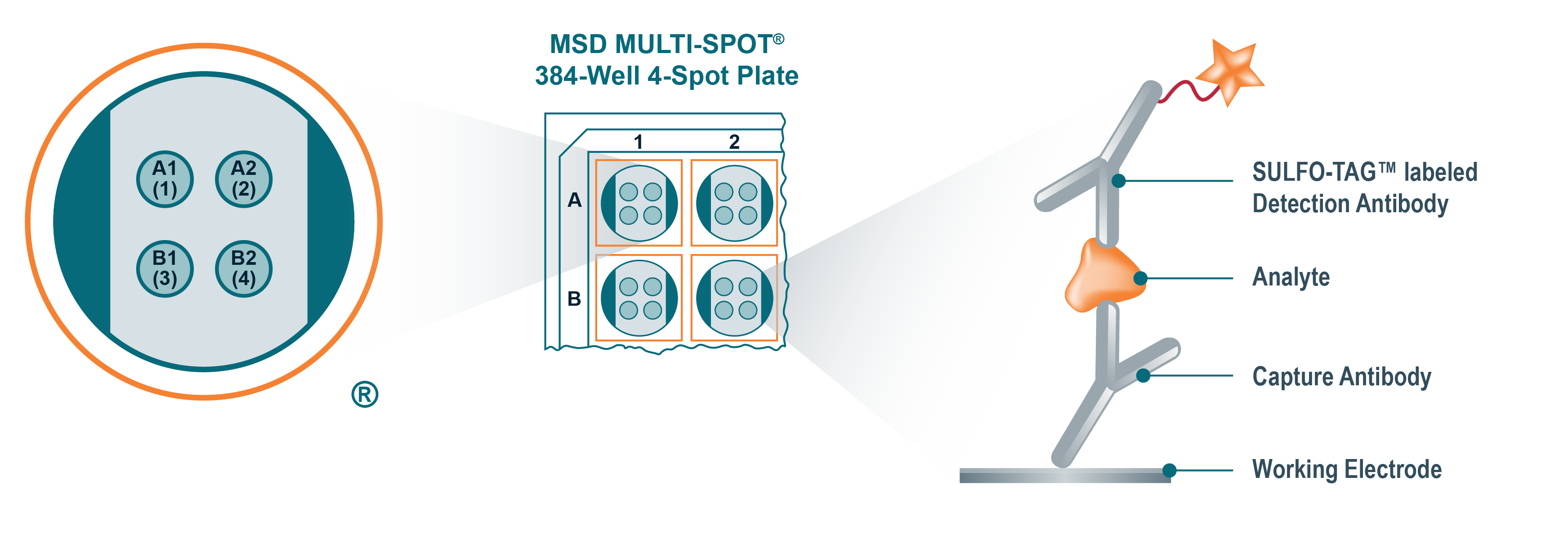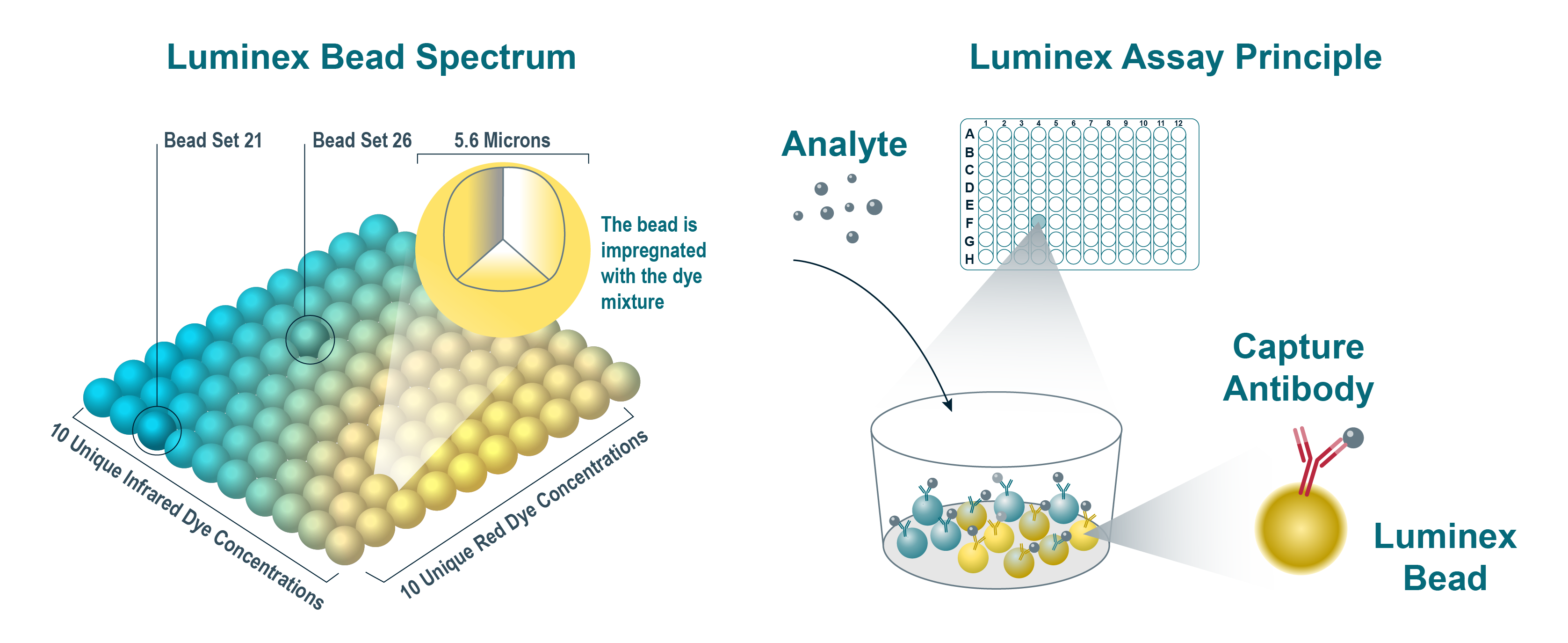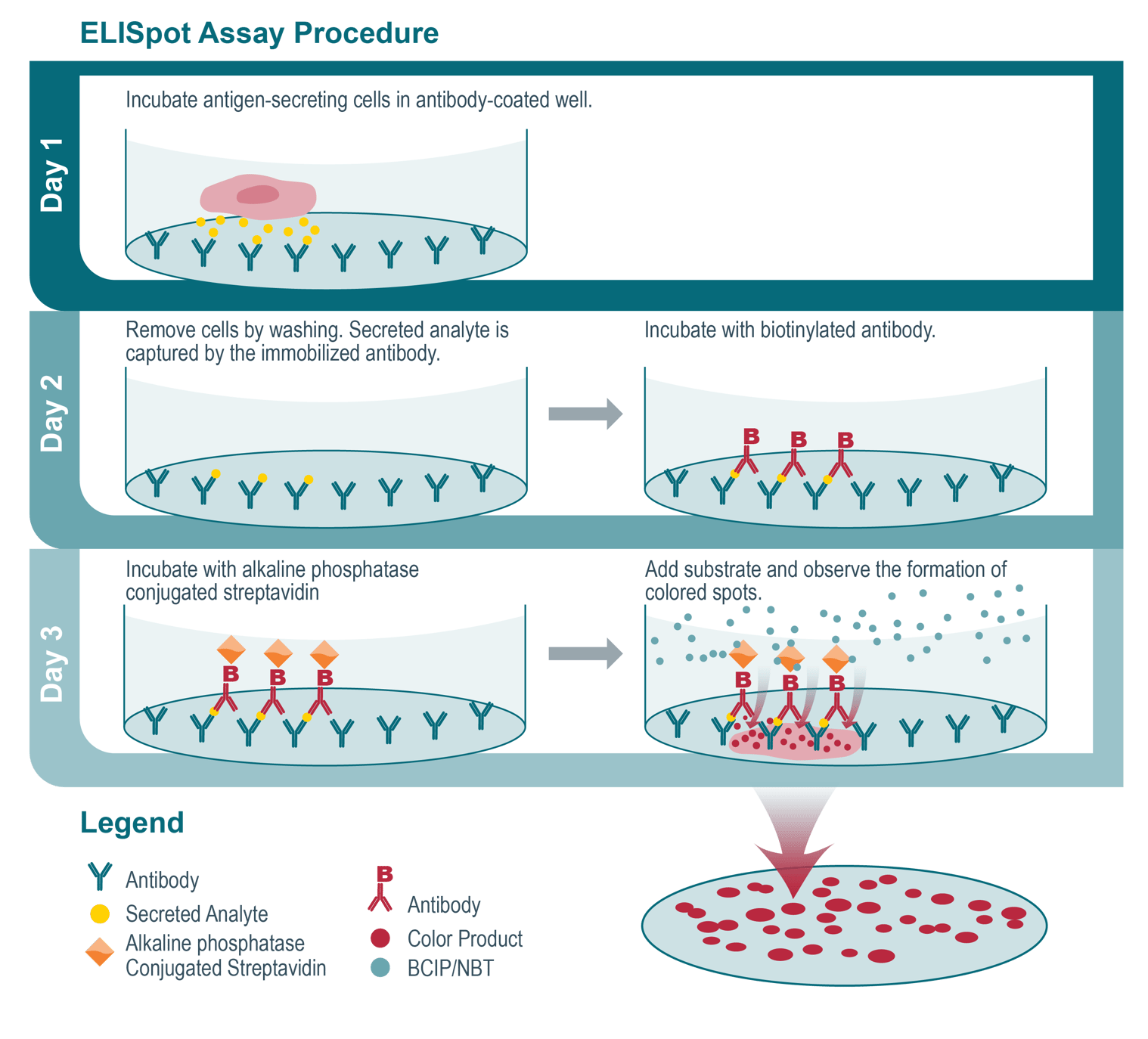- Our Services
- Platforms
- Target Solutions
- Technologies
- Service Types
- Our Science
- About Us
- Contact us

Immunoassays are powerful tools for detecting and quantifying a wide range of molecules, including proteins, hormones, and drugs in biological samples. These assays rely on the high specificity and sensitivity of antibodies to bind to specific molecules of interest and generate a signal that can be measured and analyzed.
Immunoassays are used in a wide range of applications, from basic research to clinical diagnostics, and are critical for understanding disease biology and to aid the development of new treatments.
We offer a wide range of immunoassays, such as enzyme-linked immunosorbent assays (ELISAs), Meso Scale Discovery (MSD), Luminex® multiplex assay, ELISpot, western blot, and two-dimensional gel electrophoresis (2D gel).
The choice of assay depends on the application of interest.
MSD multi-array technology is a type of immunoassay used to detect and quantify proteins or other biomolecules in biological samples. It is based on a sandwich immunoassay format, in which two antibodies are used to detect and measure the target molecule.

Fig. MSD technology principle. MULTI-SPOT technology enables multiplexing up to ten analytes per well and supports different assay formats including sandwich immunoassays. (Figure is adapted from www.mesoscale.com)
The Luminex assay is a bead-based multiplex immunoassay that can simultaneously measure multiple analytes in a single sample. It utilizes color-coded microspheres, each with a unique spectral address, to capture and detect specific biomolecules.

Fig. Luminex® Assay Principle: Luminex assays use a set of fluorescent beads where each bead falls in a unique spot on the fluorescent spectrum. The beads are coated with capture antibody targeted to the analyte of interest. (Figure is adapted from www.rndsystems.com)
The ELISpot assay is an immunoassay that measures the frequency of antigen-specific immune cells, such as T cells or B cells, by detecting the secretion of cytokines or antibodies. The assay is based on the principle of enzyme-linked immunosorbent assay (ELISA) and is commonly used in immunology research and clinical diagnostics.

ELISA, MSD, Luminex, and ELISPOT are all useful techniques for detecting and quantifying biomolecules, each with their own unique features and advantages. The choice of method will depend on the specific needs of the experiment, such as the desired sensitivity, the number of targets to be measured, the available sample volume, and the level of automation required, as well as the specific biological questions being addressed.
| Characteristics | ELISA | MSD | Luminex | ELISPOT |
|---|---|---|---|---|
|
Principle |
Uses enzyme-linked antibodies to detect the target antigen in a sample | Uses electrochemiluminescent detection to measure the signal produced by the target molecule | Uses bead-based multiplex assays to detect multiple targets simultaneously in a single sample | Measures the frequency of cytokine-secreting cells by capturing the cytokines on a membrane and detecting them with an enzyme-linked detection antibody |
|
Sensitivity |
High sensitivity. Detects concentrations in the picogram range | High sensitivity. Detects concentrations in the femtogram range | Lower sensitivity compared to ELISA and MSD. Typically used to measure medium-high concentrations of biomolecules | High sensitivity. Can detect a single cytokine-secreting cell in a sample |
|
Multiplexing |
Singleplex only, meaning it can only measure one target at a time | Singleplex and multiplex assay options. Can measure up to 54 targets simultaneously | Specifically designed for multiplexing. Can measure up to 100 targets in a single sample | Typically used as a singleplex assay to measure the frequency of cytokine-secreting cells for a single cytokine |
|
Sample Volume |
Typically <100 µL |
Usually 25 µL | Usually >50 µL | Usually 50-200 µL |
|
Automation |
|
Highly automated, with minimal manual intervention required | Highly automated, with a robotic system that can handle large numbers of samples | Can be semi-automated, but manual intervention is still required for cell counting and data analysis |
Tell us how we can help
© 2025 Crown Bioscience. All Rights Reserved.


© 2025 Crown Bioscience. All Rights Reserved. Privacy Policy
2023-09-21
2023-03-15
site_page